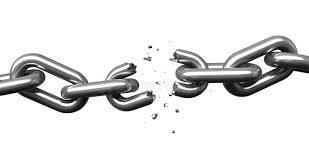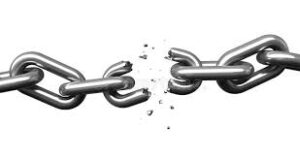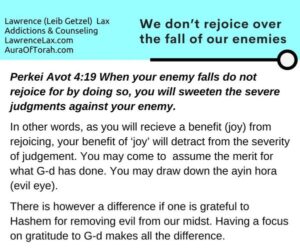
24 May Briefly; Captives and A 2 State Solution + Parshas Behar-Bechukotai
Inspired by the teachings of HaRav Yitzchak Gisnburgh and Rabbi Moshe Genuth
Briefly; Captives and A 2 State Solution
The following article was written in 2011 on the Israel –Palestinian prisoner exchange and release of the IDF soldier Corporal Gilad Shalit (now Sgt 1st Class). a 2011 agreement between Israel and Hamas to release Israeli soldier Gilad Shalit in exchange for 1,027 prisoners, 280 if these were sentenced to life including Yahya Sinwar, a prisoner who was sentenced to four life sentences in 1989. In 2008, while serving his prison sentence, Sinwar was operated on by Israeli doctors to remove a tumor in his brain to save his life. The released/exchanged prisoner Yahya Sinwar is the current head of Hamas that orchestrated the October 7 massacre.
Although we are glad for the safe release of Gilad, the cost of the exchange remains controversial.
‘Gilad Shalit 2011’(From Aura of Torah)
As military action is not always an option (or the preferred option), the Talmud and the Midrash tell numerous stories about righteous individuals who engaged in ransoming captives who as communal agents and often traveling great distances at the expense of charitable funds which were established expressly for this purpose.
In medieval times it was common for Jewish communities in port cities to sustain a fund to rescue Jews who had been captured by pirates and were being sold as slaves in the market. The practice of redeeming captives continued in various forms under various circumstances throughout history as recorded in the annals of Jewish communities throughout the world.
The commandment,(or mitzvah) to redeem captives, known in Hebrew as pidyon shevuyim, is described by Maimonides in his code of Jewish law, the Mishneh Torah:
The redeeming of captives takes precedence over the feeding and clothing of the poor. Indeed there is no religious duty more meritorious than the redeeming of captives, He who turns his eyes away from redeeming him, transgresses the commandments To sum up, there is no religious duty greater (“mitzvah rabbah”) than the redeeming of captives.2
In the next paragraph, Maimonides explains that the redemption of captives is so important that any money which had been collected, even money previously dedicated for a religious purpose, may be diverted to ransom captives…, even if it was raised for the purpose of building a synagogue. Even if all the materials had already been bought and prepared for construction. If the need arises, they must be used to redeem a captive. This is in contrast to the ruling that synagogue materials should not be sold for any other important fund.
Nevertheless, this too has limits. The sages of the Mishnah (3rd century BCE to 2nd century CE) explicitly state:
Captives should not be ransomed for more than their value, for the sake of the general welfare (in the original Hebrew, tikkun haolam, (literally translated as “repair of the world”).
The Talmud seeks to clarify the purpose of this legislation. Concern for the general welfare, the Talmud points out this could mean one of two things:
- To spare the community the burden of excessive ransom, which could lead to its impoverishment;
- In order not to give the captors an incentive to take new captives and demand high ransom.4
It is interesting to note that according to the first reasoning, the monetary welfare of the community overrides any concern about the threat of future repercussion. Thus, according to this rationale, if there were no financial burden on the community, the risk of encouraging future abductions would not be a sufficient reason to prohibit overspending.
A practical difference would present itself if an individual were to offer to pay the entire ransom. The concern of burdening the community would not apply, yet the fear of increased captures is not alleviated. The Talmud therefore cites a case where an individual did pay the full ransom himself, which would seem to demonstrate that the only concern was the burden on the community which may be consideration to prevent the bandits from increasing their kidnapping activities. >
.
Difficulties with Israel and a 2 State Solution
According to Jewish Law land that is Israel may not be given away. This includes any land that was acquired while being attacked and then conquered which is considered no different than the inherited Land of Israel . It may only be given away under the rule of the Sanhedrin as it is Hashem who has delivered to us the victory and the land.
A Jew and the Land of Israel are intimately connected. An observant Jew that elevates his holiness also brings an elevated holiness to the Land In the process of the Jewish mission of Tikun Olam, Rectification of the World (see laws of shmita). Jews elevate themselves, the Land , the World and as G-d’s Will usher in the Era of Mashiach.(Messiah).
Because the Jew and the Land of Israel are interdependent in a holy mission, making the Land and Her people as a place where G-d dwell… as the Torah prescribes is imperative. As the Torah teaches, only those who are Jews and the Righteous Gentiles may occupy the Land, That requires observance of the Jews in the Land and observance of the Torah principles (as Bnai Noach) for the Righteous Gentile.
These are some requirements to sanctifying Israel , the Land and Her people and ushering in the Messianic Era.>
PARSHAS BEHAR – (BECHUKOTAI ;sometimes read together)
I WILL GIVE YOUR RAINS IN THEIR TIME (26.4) R.24
Inspired by the teachings of Harav Yitzchak Ginsburgh and Rabbi Moshe Genuth
According to the effort is the reward. (Perkei Avot 5:22)
We learn in Bereishit that the creation of the world was in a state of balance and harmony with the concealed potential for it to become imbalanced. It is our mission of Tikun Olam – Rectification of the World (it’s imbalance and blemishes) to restore that equilibrium and elevate ourselves and the universe through our efforts.
In Torah times when Jews were in the Land of Israel , it was an agricultural society. Rain was central to life and ’good rain’ represented a good judgment. The cycle of ‘rain in its time’ touches upon many life concepts of the interaction of the physical and spiritual realms.
G00d rains give doplets of water enough with the right balance of chesed-loving kindness to nurture growth and gevurah-strength/might to penetrate the earth but not cause damage to the earth or crops. The ‘good rains’ reflect the cycle of ‘effort and reward’ as it reveals the interaction of the Jew and his service of mind and heart, and trust and faith in G-d as the Jew is commanded and observes the laws of the 7th year, the laws of Shmitah.
Shmitah requires a Jew to abstain from planting and harvesting each 7th year. This means that he must rely on a bountiful harvest in the 6th year that will sustain him through the 7th and 8th year. It is in the 8th year that he may sow his crop to be ready to harvest the 9th year.
This requires the Jew to have a great amount of trust and faith in G-d during the years leading up to the Shmita and the following yeaars of shmita as he depends on the crops of the 6th year to sustain him. For his devotion to G-d he will receive the reward of an extra an abundant crop in the 6th year and the reward of ‘rain in its time’ . The observance of shmitah is a necessary observance to sanctifying the Land of Israel and bringing the potential of the Land and its people to being Holy.
Although we may refer to Israel as the Holy Land, it currently exists in a state of ‘holiness in potential’.
The parsha speaks extensively of the consequence of not observing shmita. There are currently ‘shmita projects’ that compensate the farmers in Israel to make it financially possible for a farmer to NOT cultivate crops during shmita in order to help bring about the full return of shmita observance in the Land. The observance of shmita is crucial to making the Land of Israel a Holy Land and the ushering in the Messianic Era.
Rain is a physical representation of our spiritual condition.
It is on the day of Shemini Atzeret (the 8th day of Sukkot) on which day we pray for ‘rain… in its’ time’… in the time and place and amount that Hashem decides we merit the rain-geshem however we read this verse now in Parshas Bechukotai. We should also take note that the related word for ‘physicality’ is gashmeos. Too little rain and we have a drought. Too much rain and we have the destruction of a flood. In an ‘agricultural Torah society’ the economy is dependent on rain .. the rain is dependent on our merit by G-ds judgment.
Hashem could make the rain (rain as water is likened to Torah) fall upon us all at once in one giant sheet, or with his loving-kindness He can make the rain fall in the size of nurturing droplets. All at once in sheets it is damaging, and when it falls in droplets it is a sign of His chesed…His loving -kindness.
Although the rain must be in the form of the droplets of loving-kindness (chesed) to be beneficial, a small amount of strength (gevurah) must be present in the rain for the water to be able to permeate the ground. We always need a ‘drop’ of gevurah-strength to accomplish things in this world, The rain, like our character (midos) requires a delicate balance. We must always ask ourselves if our attributes of loving kindness and strength are in balance.
Like the ‘rain in its time’, the ‘holiness’ of the Land of Israel is intimately connected to the spiritual condition of the Jewish people.


Leib Getzel (Lawrence) Lax
Addictions and Counseling
auraoftorah.com
lawrencejlax@gmail.com